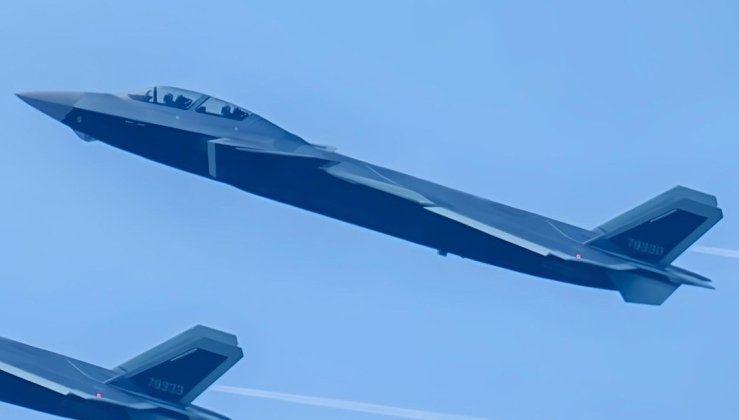J-20S Now Operational: China Just Brought the World’s First Twin Seat Fifth Generation Fighter Into Service
Defence affairs
The Chinese People’s Liberation Army Air Force has been confirmed to have brought a twin seat variant of the J-20 fifth generation fighter into service, marking the first time that an aircraft of its generation becomes operational with the ability to accommodate a weapons system’s officer alongside a pilot.
The long rumoured twin seat fighter thought to be designated the J-20S, or possibly the J-20B, was first unveiled in October 2021, and allows for greater work sharing on complex missions. The J-20’s much longer range than rival Western fighters, with a combat radius approximately twice as wide as the F-22 and F-35, makes work sharing particularly important to avoid pilot fatigue, despite the aircraft’s unprecedentedly high levels of automation and highly streamlined information displays.
The J-20S has entered service with the 172nd Air Brigade, which serves as both an advanced training unit and a combat reserve unit based at the Cangzhou Flight Training Base in Hebei province not far from Beijing. The 172nd first received J-20s in February 2018, making it the second to field the fighter class. The decision to deploy the J-20S under the brigade is likely to have been influenced by the perceived need to develop different tactics for the aircraft compared to single seat J-20. The aircraft are expected to serve as controllers for unmanned ‘wingman’ aircraft such as the Dark Sword unmanned fighter currently under development, and may also operate in electronic attack roles with a number of modifications, and as airborne command posts.
It is expected that the J-20S will not serve primarily as a trainer, but rather as a frontline combat platform that will comprise entire units. As observed by author of the book China's Stealth Fighter: The J-20 'Mighty Dragon' and the Growing Challenge to Western Air Dominance, Abraham Abrams:
“Twin seaters could potentially form a very large proportion of J-20 units, perhaps mirroring how PLAAF Flanker acquisitions in the late 2010s transitioned from predominantly single seaters to exclusively acquiring twin seaters. Official artwork preceding the J-20S’ unveiling showed twin seaters operating in formation with no single seaters among them, possibly indicating an intention for them to form entire units for frontline combat operations like the J-16, rather than a small portion of predominantly single seat units as seen with the J-11BS. The twin seater is expected to potentially form the basis of multiple new variants such as strike and electronic attack aircraft, much like the Su-27’s twin seater formed the basis for developing an interceptor and AEW&C derivative in the USSR and Russia.”
Much remains uncertain regarding the future of the J-20S fleet, although it remains highly possible that a very significant portion of J-20s produced will be twin seat variants in future. With the J-20 being procured on a much larger scale by China’s air force than any other fighter class is by any other service in the world, the J-20S is also expected to be produced at far higher rates than any other twin seat fighter.



Comments
Post a Comment